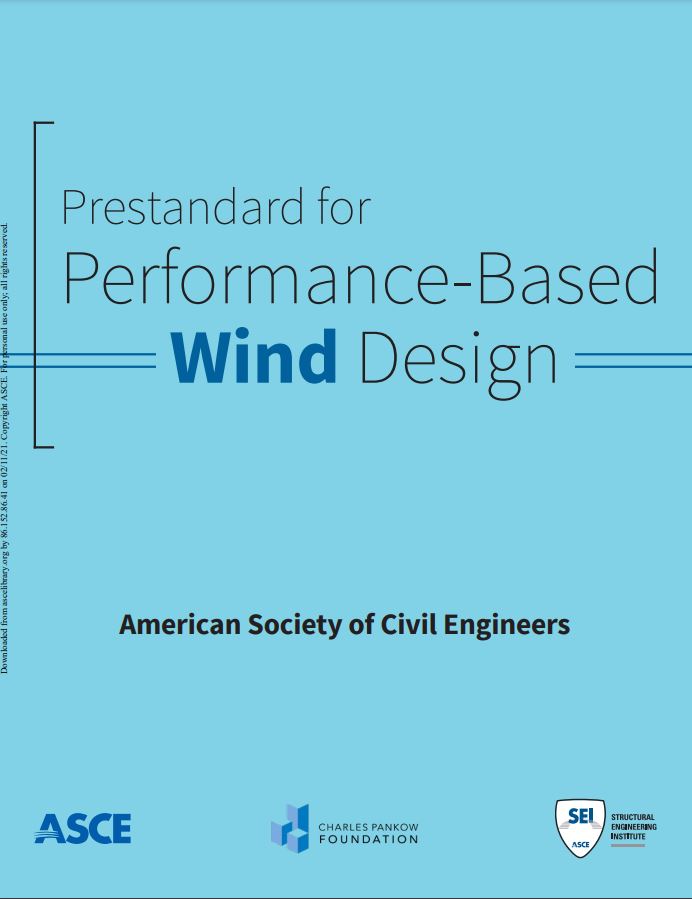Performance-Based Wind Design
Posted on 11 February 2021
Performance-Based Wind Design has the unique purpose of making improvements on traditional design methodsin order to advance the design for wind on buildings. It impacts a number of different facets of the design approach and the eventual development of the building using advanced methods of analysis to guide the process. The benefits of Performance-Based Wind Design are realised in the ability to improve the efficiencyof the structure and façade of a building while still being able to meet the desired design and functional requirements andreduce the chance of asset or personal damage due to wind effects.
Recently the Structural Engineering Institute (SEI) of the American Society of Civil Engineers (ASCE) released a Prestandard for Performance-Based Wind Design as an alternative to the prescriptive procedures for wind design of buildings contained in Minimum Design Loads and Associated Criteria for Buildings and Other Structures (ASCE 7) and the International Building Code (IBC). In addition, on December 16, 2020 the ASCE in association with the SEI published the ASCE Manual of Practice No. 143: Design and Performance of Tall Buildings for Wind, a culmination of 4 years’ work under the chairmanship of Preetam Biswas, P.E., M.ASCE. Unlike the Prestandard, the Manual of Practice document applies to a much broader range of buildings and covers other non-structural performance targets such as pedestrian wind environment impacts.
As an early adopterof Performance-Based Wind Design which has been applied to the determination of design wind loads on cladding and structure, Windtech welcomes the provisions of the Prestandard which supports what Windtech has been doing for at least the past decade.
Tony Rofail who has been a Director with Windtech for 30 years and based out of the Sydney HQ had some interesting insights on the content of the Prestandard as follows:
- The method of “multisector analysis”, which we have been using for many years now, is referred to in the ASCE Manual of Practice No. 143 as the most rigorous approach. It is in line with the performance-based approach as it involves integrating the probabilities for wind actions from the various wind directions to arrive at the design load effect with the least amount of simplification or approximation of the wind climate model compared to other methods.
- The method we use to implement the multi-sector method by applying a form of “smoothing” of the directional probability of the wind climate model to adjacent sectors (assuming a minimum of 36 wind directions) is also in line with the recent suggestion in the ASCE Prestandard to ensure robustness.
- The spectral analysis is considered a form of performance-based analysis although there is a significant emphasis on wind loading time series. Windtech can provide the load cases in either of these forms.
- The Prestandard shows a clear preference for using the High Frequency Pressure Integration (HFPI) method over the High Frequency Balance (HFB) method as it obtains a more accurate distribution of the mean and background responses. There will be some projects where it is not feasible to adequately instrument the building for the HFPI method for practical reasons such as the difficulty in fitting enough tubing due to extreme slenderness.
- The ASCE Manual of Practice No. 143 correctly emphasises the importance of the accuracy of the FEA model, including the ability to account for second order effects (such as cracking or P-Delta effects) and stability, among other factors. The accuracy is particularly important because the dynamic properties derived from the structural consultant’s FEA model directly impacts the accuracy of the outputs of the dynamic responses of the structure from the wind tunnel study. The Manual of Practice dedicates three chapters to this topic.
- The Prestandard states: “Wind tunnel testing is the only approach consistent with reliable application of performance-based design principles and shall be used to determine the local wind pressures and global wind-induced structural loads and responses.”Similarly, in the ASCE Manual of Practice No. 143 it states: “Wind tunnel testing . . . is the only current method that allows the designer to determine aerodynamic characteristics for specific shapes and over a full range of wind speeds”
A free copy of the ASCE Prestandard for Performance-Based Wind Design can be obtained from the link below:
https://ascelibrary.org/doi/pdf/10.1061/9780784482186


The ASCE Manual of Practice No. 143 can be purchased from the link below:
https://www.asce.org/structural-engineering/news/20201216-new-manual-of-practice-release/
Return to Main News Page


